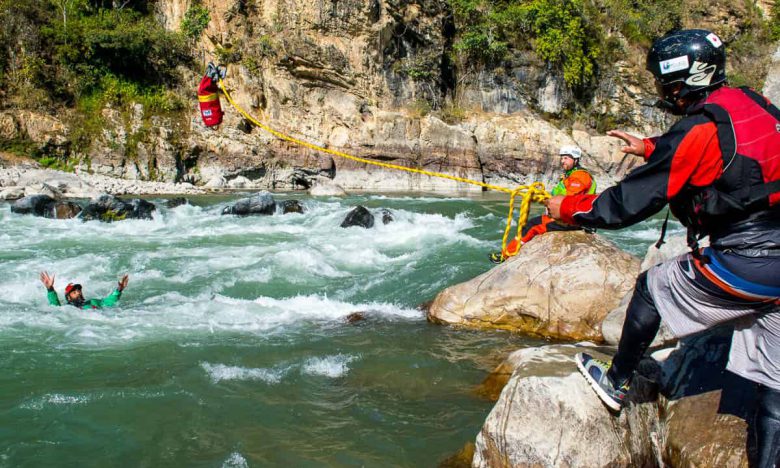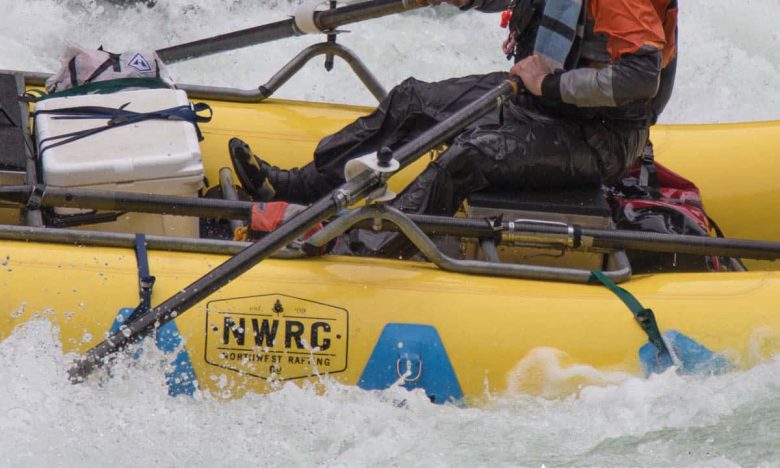Managing Risk on the River: A rafters guide to “safety”
“Safety first,” is an expression I hear often on the river. However, I would argue that safety is an illusion. There is an inherent level of risk we all accept every time we go rafting. The best thing we can do is work to manage that risk and bring it down to a level we find acceptable. We can measure risk by weighing the consequences of a hazard with the probability or likelihood that it will happen.
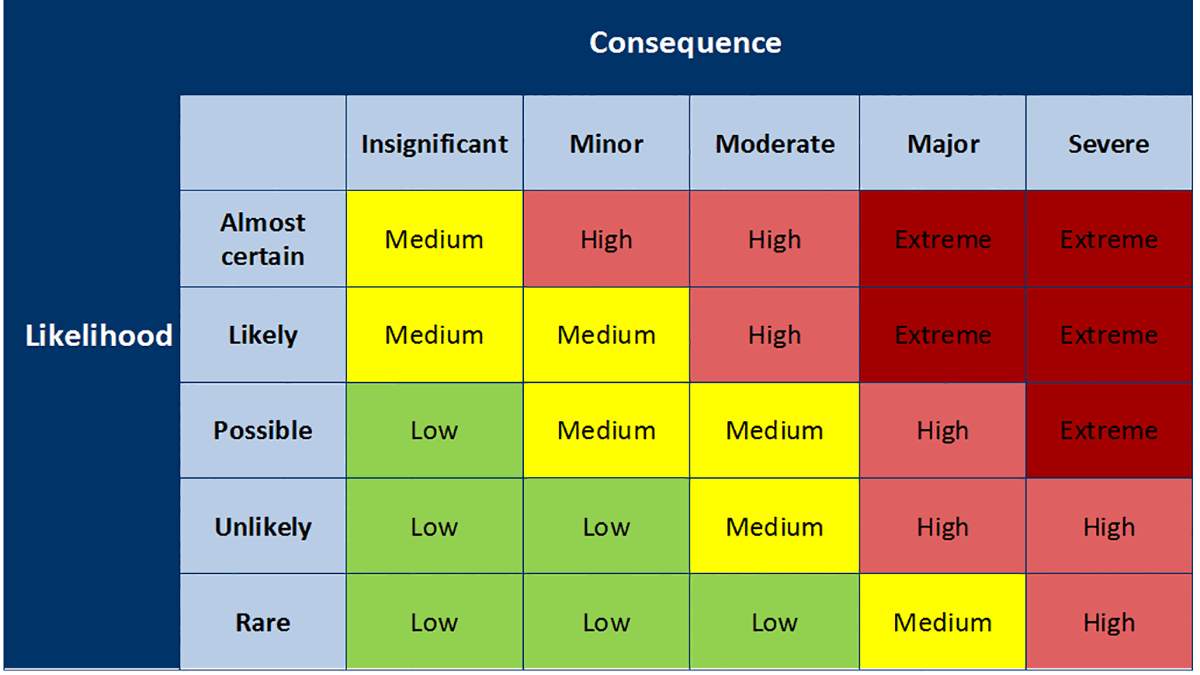
Wearing proper personal protective equipment (PPE) is one way to reduce risk when rafting. There are many other actions that can be taken to continue to manage risk and I want to introduce you to a heuristic that can help you remember concepts that will aid in your ability to assess and reduce risk to a level that is acceptable for you when whitewater rafting; CLAPT.
- Communication
- Line of sight
- Avoid hazards
- Position
- Technical skills
Communication
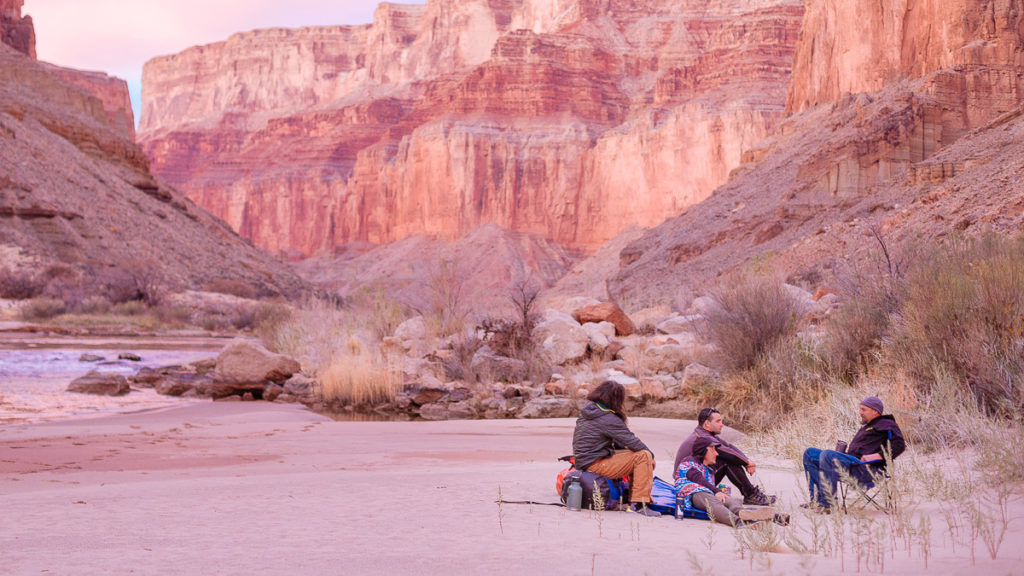
Before getting on the water, have a conversation with your boating team and develop a plan for the day. Some things that are good to cover are:
- First, know the experience of your team. What is their boating competency, who has medical training (WFR, EMT, Paramedic etc.), and who has rescue training? If there are people new to river running, make sure they receive an adequate “safety talk.”
- Designate a trip leader as well as someone who will take charge if there is a medical emergency or a rescue. They can be the same person.
- Develop a boat order. I choose the order based on the team’s experience, knowledge of the run, and who is carrying rescue equipment and first aid.
- In addition, think critically about the best way to approach each rapid. Will you run it one after another with adequate boat spacing? Will you run it in pods of 2 to set safety for each other? Come up with a plan that best suits your team and the river you are running.
- Decide how you will communicate while on the river. Take a moment to establish hand and whistle signals that everyone agrees with. As with pointing positive consider speaking positive. Avoid telling a swimmer, “don’t stand up.” Instead positive verbiage is encouraged such as, “feet up” or “swim.”
- Have a conversation about safety gear, rescue gear, and first aid. Who is carrying what and where is it located?
- Finally, do you have the capability to call out for help in the event an incident does happen.
“Effective teamwork begins and ends with communication.” – Mike Krzyzewski
At the end of the day or trip take the time to debrief with your team. What went well, what could use improvement, and what did you learn are three good questions to ask yourself. Reflecting on your experiences will encourage your leaning and experience will give you better judgement.
Line of Sight
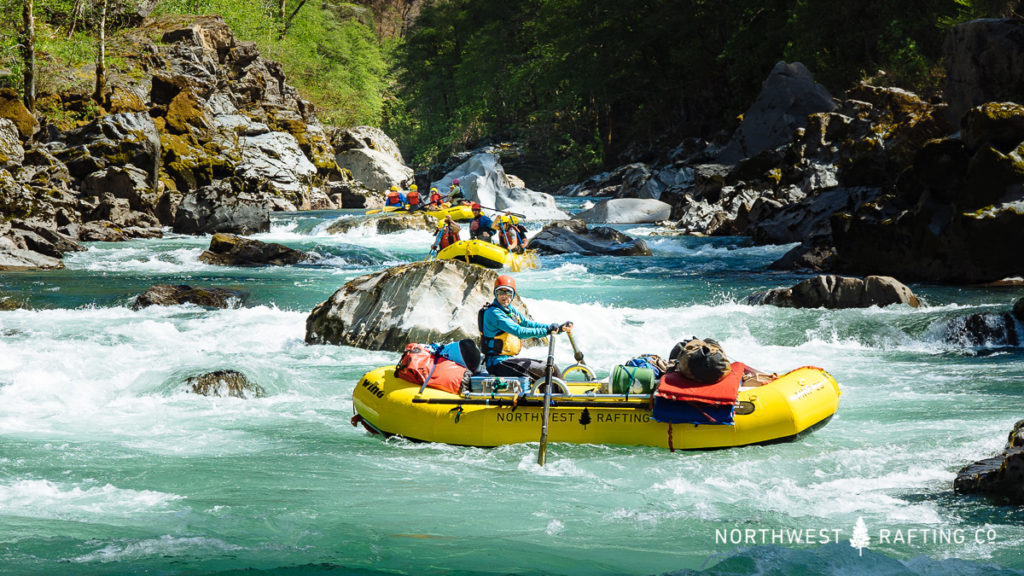
Line of sight refers to your ability to maintain visual contact with your boating team. Things to consider are:
- Keep your head on a swivel. Frequently look up stream to check on your team.
- Know how many boats are in your group and how many people are on each boat.
- Remember, you are the safety for the boats behind you. Should they have a swim or a perch you need to be aware of it to aid in a rescue.
- Ideally, the whole team should be visible. This is not always possible as rivers do not run in a straight line. But if you have not seen a boat in a while pull over and wait for them to maintain that line of sight.
“The only thing worse than being blind is having sight but no vision.” – Helen Keller
Avoid Hazards
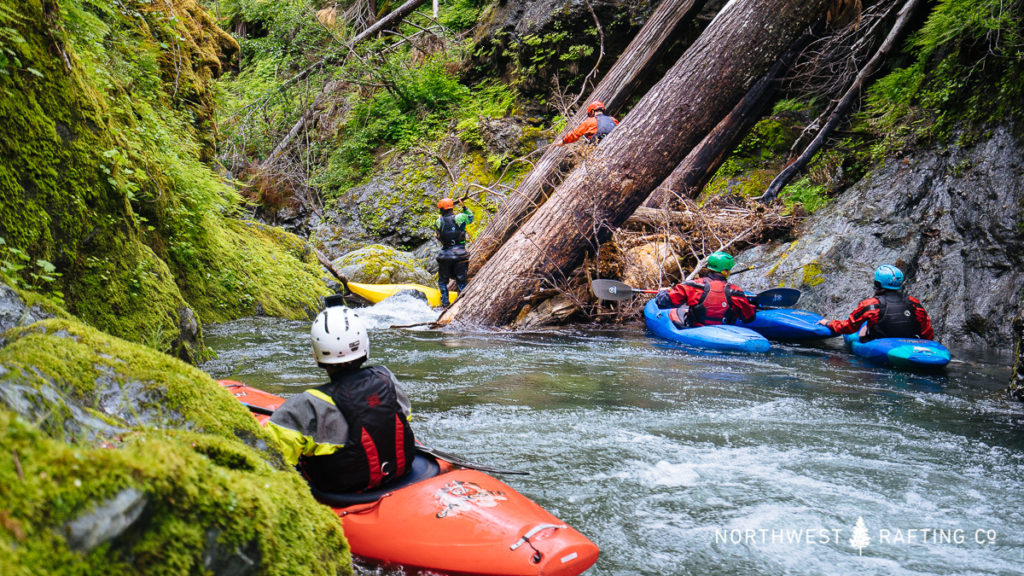
Typically, I want to avoid hazards, both objective and subjective.
Objective hazards are uncontrollable. Know how to identify each of the following:
- Rocks
- Man made hazards such as rebar or bridge pilings.
- Undercuts
- Sieves
- Strainers
- Sweepers
- Boat flipping hydraulics
- Environmental hazards such as rain, cold, heat
“Proper preparation prevents piss poor performance.” – Unknown
Subjective hazards are human caused and can be minimized through proper preparation.
- Pain
- Hunger
- Fatigue
- Anger
- Loneliness
Ultimately, the combination of subjective and objective hazards creates a good recipe for an accident.
Proper preparation will help you to avoid hazards. Some things to consider when preparing for your trip are:
- Do not boat alone. Ideally there are 3 people or more in your team.
- Know the forecasted weather so that you can dress appropriately and avoid heat and cold related injuries.
- Lastly, research the river for current and predicted flows, any new or known hazards, difficulty, portages, possible egress, and scout locations for more challenging rapids.
American Whitewater, Whitewater Guidebook, and Dream Flows are great resources for information about rivers.
Position
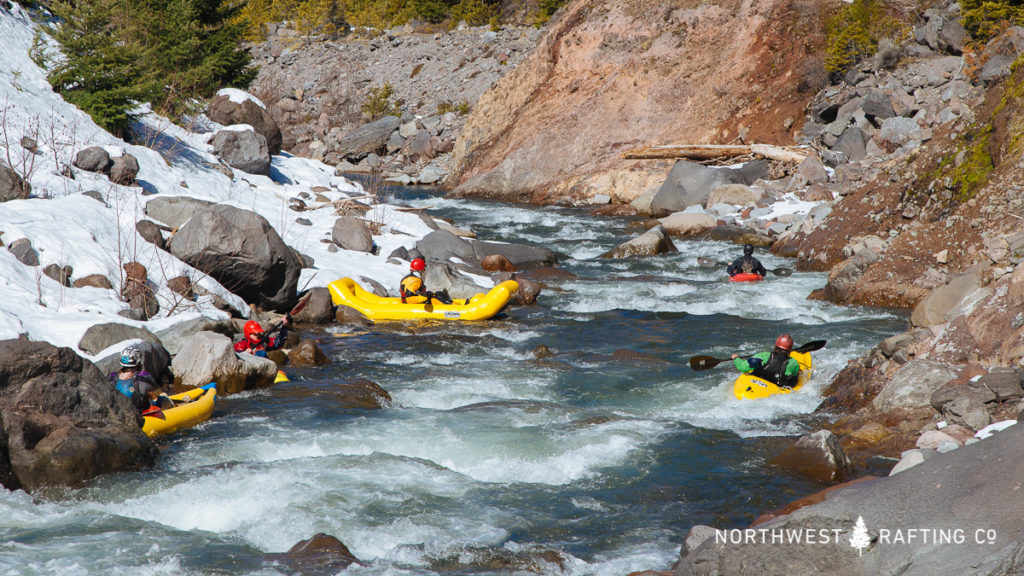
Your position on the river is variable and dynamic. Some things to consider when positioning yourself on the river are:
- Boat spacing. The boat in front of you is your safety. It is up to you to create the appropriate spacing with that boat.
- The lead boat is most vulnerable as they do not have a downstream “safety” which puts added responsibility on the second boat. Boat 2 is providing “safety” for the boat in front of them and behind them.
- Adequately position yourself to set “safety” below rapids. Choose an eddy where you can assist swimmers. However, consider eddies that are large enough for your whole team or make sure there are enough eddies for everyone to stop before the next rapid.
- Another option is to have the second boat in the pod eddy out on the opposite side of the river to set “safety” on both sides.
“Position yourself well enough, and circumstances will do the rest.” – Mason Cooley
Technical Skills
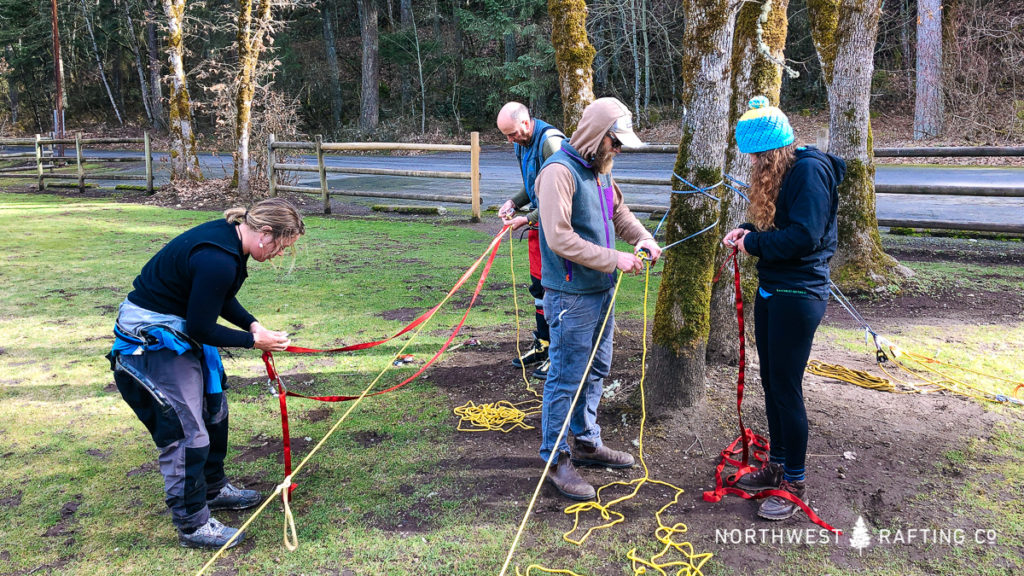
There are a few rescue skills that should be honed. Consider practicing them every time you go boating. Practice makes permanent.
Throw Bags Putting a rope in the river is inherently dangerous and creates another hazard. Know how to properly use the rescue tools you are carrying. There is a lot of conversation regarding throw bags and which ones are best. As a rule of thumb, the best throw bag is the one you train with. Set up a target in your yard and practice throwing ropes on dry land to increase accuracy. In the end, there are many things to consider when deploying a rope in the river. Some basics include:
- Do not wrap the rope around any body part.
- Learn to throw with each hand (left, right): overhand, underhand, side arm.
- Make eye contact with swimmer and announce you are throwing the rope.
- Take out enough rope for dynamic allowance and pile downstream from your feet.
- If possible, have a teammate back you up and assist you by holding the back of your PFD.
- Only throw a rope if you are wearing your PFD.
Swimming in current/rapids is an important skill worthy of practice.
- Always wear an approved PFD.
- Wearing a helmet is always a good idea. Comfort is important but also consider style.
- Passive or defensive swimming with feet up in front of you while facing downstream.
- Aggressive swimming. Swim like you boat. Keep in mind your angle to the current.
- Never try and arrest downstream movement with your feet.
- Do not swim above hazards or victims.
- Set downstream “safety.”
Righting a flipped raft I always encourage people to practice flipping and reflipping their raft so they know how to do it when the time comes. There are those who have flipped and those who will flip.
“Talent you have naturally. Skill is only developed by hours and hours and hours of beating on your craft.” – Will Smith
Knots
- Bowline
- Figure 8 family of knots
- Water knot
Anchor building
- Basket Hitch
- Girth Hitch
- Single loop
- Wrap 3 pull 2
This introduction to some technical rescue skills is not a replacement for proper training and instruction. Many companies offer a variety of classes designed for recreational and professional boaters.
Wrap Up
A river environment is dynamic and demands critical thought. What might work on one river or rapid may not be the best solution for another. Do not forget that managing risk on the river is cyclical. Awareness and continued assessment of yourself, your team, the environment, and the surroundings needs to be monitored. (Has the weather changed? Has the flow changed?) Trip plans and communication should be adapted to suit current and changing conditions. If you cannot reduce risk to an acceptable level, other decisions and actions should be made. Remember to consider options like portaging or lining your raft. Do not fall into the heuristic trap of commitment. Be adaptable in your decision making.
To summarize, communicate with your team; make sure you have eyes on everyone; avoid hazards; position yourself effectively; and, practice and hone your technical skills.
